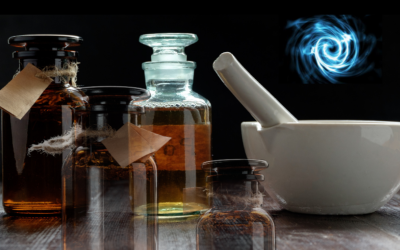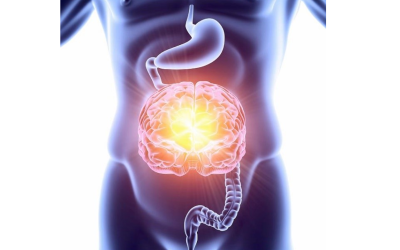One of the most egregious ways that modern medicine has gone astray is in its firm establishment of the idea that disease is simply a functional, or organic, disturbance or defect. Thus, people have been led away from an awareness of the inner relationship to, and meaning of, illness.
As the limitations of the technical and chemical potential of modern medicine have become strikingly clear, people are increasingly returning their gaze to the fundamental issues that underlie the evolution of an illness. The physical expressions of an illness are only the most visible part of its reality; a reality that can only be completely comprehended via the workings of the ill person’s inner being. Chronic illness is deeply connected with soul-life and can never be understood when viewed in isolation from its psycho-spiritual ground.
Illness has the potential to serve as a stage of development that helps to facilitate greater connection with one’s true self and the source of one’s being. In The Anthroposophical Approach to Medicine, Otto Wolff, M.D. writes: “In the final analysis, the capacity for illness is a spiritual problem. What begins in the spirit metamorphoses in the course of time into the organic [i.e., the physical]. Thus, illness manifesting in the organic realm is not only a consequence of the events on higher planes but also a remedy to overcome and solve something on a lower plane which could not be dealt with in a higher realm. In this light, illness gains a totally different dimension; it is not only a consequence of the deviations of soul-life, but it also helps in the development of the spirit.”
Clearly, illness is not a desirable state. Undeniably, it can be a nightmarish journey of suffering and despair. The human body is constituted so that each and every one of its functions strives toward health and self-cure. One of the most important things we can do (primarily through living in accordance with Nature’s laws) is to support those functions in their continuous efforts toward self-repair and self-cure.
Nevertheless, if chronic disease becomes a part of one’s journey through this life, it is important to recognize its deeper implications and psycho-spiritual roots. True healing, as opposed to only the remission of outward symptoms, requires that an individual overcome the estrangement from the divine creative force, which only perpetuates the potential for chronic illness. Lacking this transformation of soul existence, genuine cure will remain out of reach.
Wolff writes: “If one [exclusively] focuses upon the physical aspect of cancer instead of the illness that stands behind the tumor, one bypasses the underlying illness and the human being. Since illness belongs to the being of a person, it is of necessity as many-sided as he.”
Yet, as we all know, often despite our best intentions and efforts, even when inclusive of a focused effort toward inner transformation, an individual succumbs to his or her illness and passes on to the next stage of soul-life.
Nevertheless, as Wolff observes: “Life on earth thus serves to prepare for another form of existence into which earthly experiences flow. When one sees man in his spiritual reality, then all measures taken, even in treating an unconscious, moribund individual, have a far-reaching significance…It is decisive for man as a spiritual individuality to support his attempts to handle his illness, which may bear fruit only after he has left his body.”
There have been many times over the years when I have been consulted about cases where it was clear that the disease had irreversibly gained the momentum in its struggle with the body’s powers of resistance and recovery. In other words, the train had already left the station and only a direct intervention by God would be able to reverse its course.
Typically, when a patient is dying, conventional medicine switches into palliation mode. Accordingly, all its efforts are directed via pain medications and other drugs to control suffering. Certainly, the control of suffering is a leading priority. However, there is another equally vital aspect of treatment that is virtually ignored: the need to prepare that person’s soul for its transition to the next plane of its existence.
Some dying individuals experience a spontaneous awakening to higher soul consciousness; but many, especially if heavily sedated and immersed in suffering, regret and bitterness, do not do so, and thus, cross into the next world in an unprepared, confused state, still shackled to many of the same inner conflicts that plagued them during mortal life.
Sir John Woodroffe, the early 20th century authority on Buddhist, Hindu and yogic philosophy, writes in The Science Of Death: “In the Buddhist’s view, life consists of a series of successive states of consciousness. The first state is the birth-consciousness; the last is the consciousness existing at the moment of death, or the death—consciousness…Death, as well as life, is an art, though both are often muddled through…Death is not an absolute ending, but only a separation of the psyche from the physical body. The former then enters a new life, while the latter, having lost its principle of animation, decays. Death disincarnates the soul-complex, as birth incarnates it. In other words, death is itself only an initiation into another form of life than that of which it is the ending…Existence being the continuous transformation of one conscious state into another, the nature of death-consciousness determines the future state of the soul-complex.”
Thus, in Spiritual PhytoEssencing great emphasis is placed upon the need to help a dying person overcome estrangement from his or her own true nature and move toward unitive consciousness with the divine source of all being. The following verse by the great 15th century Indian mystic Bhagat Kabir underscores the importance of this type of healing work.
“O Friend, hope for Him while you live, know while you live, understand while you live; for in life deliverance abides.
If your bonds [to the ego and the other superficial aspects of self] be not broken while living, what hope of deliverance in death?
It is but an empty dream that the soul shall have union with Him because it has passed from the body;
If He is found now, He is found then;
If not, we do but go to dwell in the City of Death.”
In the preface of his landmark translation of The Tibetan Book Of The Dead, W.Y. Evans-Wentz observes: “The message is, that the Art of Dying is quite as important as the Art of Living (or of Coming into Birth), of which it is the complement and summation; that the future of being is dependent, perhaps entirely, upon a rightly controlled death.”
If one accepts the validity of this perspective, it is inarguable that, when working with a dying individual, the control of physical suffering and the orientation of the soul’s compass toward the next stage of its journey are of coequal importance.
The Art of Spiritual PhytoEssencing:
Soul-Level Healing Work with Essential Oils
Spiritual PhytoEssencing is an art that employs essential oils for the purpose of soul-level healing. Anthroposophical science teaches that fragrance formation represents an interaction between terrestrial and cosmic forces, and it is used by the plant as a means of uniting with the spiritual essence contained within sunbeams.
Anthroposophy founder Rudolf Steiner states: “Matter is most spiritual in the perfume of the plant. When the spirit most closely approaches the physical earth, then we have the perception of fragrance.” In other words, an essential oil is the most concentrated carrier of the plant’s soul.
Furthermore, the Kabbalah teaches that the scent of a plant represents the superconscious aspect of its soul. Whereas the taste of a fruit, such as an orange, nourishes a person on a conscious level, the scent of its oil provides sustenance for his or her spiritual dimension.
According to Kabbalah, the human soul contains animal-, vegetable- and human-soul components. Thus, each of us has the ability to relate to plant souls on a soul-to-soul level. Plants are alive, and everything that lives has a soul. An essential oil, the bonding medium for the soul of the plant, is uniquely suited to act as the physical entity that can facilitate an interface between plant and human souls.
Based upon the interface of these two principles, I formed the following hypothesis: The plant-soul is not encumbered by ego, so it has the qualities of purity and infinity. Thus, essential oils, when selected for their relevance regarding an individual’s true inner nature, are eagerly received by the human soul and infuse it with the impetus to move beyond limitation by changing its orientation from the finite to the Infinite.
There are two crucial prerequisites that will determine whether essential oils will exert this type of action when engaged with the human soul. First, one needs to identify the constitutional themes and archetypes that characterize the subject’s psycho-spiritual dynamics. Subsequently, these themes need to be accurately matched with corresponding essential oils. It is this customized correspondence that encourages that individual’s soul to develop soul-to-soul relation with the proffered essential oils and allow these oils to serve as a “reorganizing nucleus.” In essence, the essential oils serve as the unique matching key that can unlock the moribund potential within an analogous human-soul.
Secondly, one must also be familiar with the inner nature of the essential oils that are under consideration for use with a given individual. Every living cell must be animated by a vital force, or “ensouled,” and it is this incarnation of higher forces into living tissue that lends each organism its tangible expression. Hence, when using essential oils for psycho-spiritual work, all of the physical features, clinical properties and historical associations, etc. of the plant can be used to develop an understanding of an essential oil’s unique soul-nature.
The central reference text in Spiritual PhytoEssencing is Berkowsky’s Synthesis Materia Medica/Spiritualis of Essential Oils, which contains 105 chapters and each is devoted to the elaboration of the inner soul-nature of a specific essential oil. This process of elaboration involves the interweaving of information regarding plant characteristics, habitat, historical and folkloric associations and therapeutic action with a diverse variety of associated synchronicities.
The great psychologist Carl Jung coined the term synchronicity, referring to thoughts and events that are connected in other ways than causally (i.e., by the law of cause and effect). In the classic example from his own work, Jung, while listening to a patient recount a dream about a scarab (a type of beetle), heard a light tapping on his office window. When he went to investigate the sound, he saw a brilliantly colored scarab just outside the window. This uncanny coincidence made him wonder about the meaning of such “synchronicities.” Synchronicities play a major role in my elaboration of the unique soul-nature of each essential oil.
The Use of Customized Blends of Essential Oils
Spiritual PhytoEssencing practice actually consists of the use of customized blends of essential oils rather than using oils individually. The idea being to create a “portrait in oils” whose composite plant soul image has a great deal of congruence with the inner identity of the soul of the individual for whom the blend is intended. This congruence is the operative factor in encouraging the soul to forsake total immersion in the challenges and turmoil of everyday life in favor of movement toward the inner light and unitive knowledge of the divine ground of all soul existence.
Nevertheless, using the Spiritual PhytoEssencing understanding of those oils, one can employ oils singularly to good (albeit far less thorough) effect. In any case, “knowing” the inner nature of each of the oils in a given blend determines whether or not that “portrait in oils” will be accurately rendered, and subsequently gravitated to, as a reflection of Self by the human soul for whom it was designed.
Rosemary Oil
In the following discussion (consisting largely of excerpts from the Rosemary chapter in Berkowsky’s Synthesis Materia Medica/Spiritualis of Essential Oils), I describe the inner identity of rosemary oil, one of the leading oils to consider when the intent is to help orient the soul of someone who is dying.
Rosemary (Rosmarinus officinalis), indigenous to Portugal and the Mediterranean region, is now cultivated widely throughout the world but prefers to be near the sea. The name Rosmarinus was compounded by the Roman scholar Pliny from the Latin words ros, meaning “foam,” and marinus, meaning “sea.” This was based upon his observation that rosemary grew so close to the seashores that it was continually being sprayed with sea water. Some writers translate Rosmarinus as “sea dew.” Regardless of the variations in translation, the important signature here is rosemary’s association with proximity to the sea and sea water.
Evolutionary science teaches that life on earth began in the ocean the primordial soup containing the molecules from which the earliest life-forms were subsequently composed. The creation myths of diverse ancient civilizations identify the primeval ocean as the medium from which the structured universe arose.
The Babylonian Seven Tablets of Creation, declare:
“When the heavens [i.e., the cosmos] were not raised above,
And below the earth was not called by name,
The primeval deep was the source of both,
The chaos of the sea was the mother of them all.”
In the Creation story of Genesis, water (mayim in Hebrew) plays a germinal role in the creative process. Genesis 1:2 relates: “The earth was without form and empty, with darkness on the face of the depths, but God’s spirit moved on the water’s surface.”
Only then did God say: “There shall be light.” And as an instantaneous result of this declaration of divine will, “light came into existence.”
It is certainly no coincidence that water and the divine spirit are described in relation to each other. In the same way that water is essential for physical life, so the divine spirit sustains soul existence. This interaction of the primordial ocean and divine spirit suggests that rosemary’s identity as “sea foam” points toward its unique value in supporting the ingress of divine spirit into the essence of a human soul.
In his Intimations of Immortality (1807), William Wordsworth observes:
“Though inland far we be,
Our souls have sight of that immortal sea
Which brought us hither.”
The nexus in this verse of the memory, the soul, the sea and Creation, elegantly expresses a rosemary oil sentiment.
A medieval Christian legend holds that when Mary and young Jesus were fleeing to Egypt, Mary once spread her mantle over some rocky ground from which some white-flowered rosemary plants were growing. She then set the child on this soft, temporary bed. Later, when she lifted him, and then picked the mantle up, she observed that the rosemary flowers had turned blue. Ever since that time, rosemary has been a blue-flowered plant. The significance of this legend is that to the people of that time, the color blue symbolized heaven, eternity, truth and wisdom.
According to The Tibetan Book Of The Dead, shortly after a person dies the soul encounters a blue light which “will shoot forth and strike against thee with a light so radiant that thou wilt scarcely be able to look at it�At this stage, thou must not be awed by the divine blue light which will appear shining, dazzling and glorious and be not startled by it. That is the light of Tagatha [one of the names for Buddha –implying one who has achieved holiness and enlightenment].”
Rosemary’s reputation for strengthening memory and as a symbol of both the fertility of the afterlife and of faithfulness between lovers or friends, as well as between the living and their deceased forebears, extends back thousands of years. Rosemary was placed in the tombs of the pharaohs to help the dead king recall his previous life during his sojourn in the afterworld. In Europe, rosemary incense was once burned at funerals in memory of the deceased.
Rosemary is a member of the Labiatae family, and as such, it overcomes the watery element with strong air and warmth processes. The air and warmth processes in Labiatae plants permeate the entire plant. These plants need the sun’s warmth for their full development, and they take this warmth up readily and distribute it throughout the plant structure. In this way, they become bearers of warmth that support the warmth process in human beings. Warmth encourages the incarnation of the higher soul into both consciousness and the tissues of the body.
In aromatherapy, rosemary oil is considered to be potentially useful for the treatment of the following symptoms and conditions: memory loss; mental strain and fatigue; poor concentration; lethargy; depression; inhibited expression of thoughts and feelings (opens the throat charka); lack of self-confidence; low self-esteem; poor resolve; negativity; over-thinking; nerve weakness; exhaustion; paralysis; loss of hearing, sight or speech; vertigo; heart weakness; heart palpitations; weakness of arterial blood-flow; low blood-pressure; adrenal fatigue; muscle stiffness, cramping and pain. On a psycho-spiritual level, rosemary is thought to help release negative thought-patterns, protect against psychic attack and help develop sensitivity to the higher forces.
The homeopathic remedy Rosmarinus is a potentized form of rosemary prepared from a tincture of the whole plant. The symptom-picture of this remedy provides pivotal insight into the true nature of this plant, and thus, its essential oil. The homeopathic symptoms of Rosmarinus include: anxiety; deficient memory; heaviness and dullness of the head; overpowering sleepiness; oppression of breathing and spasms of the chest; chilliness; fever with chill over the whole body with icy cold legs.
Among essential oils, rosemary is one of the highest in hydrogen content, and this element is particularly influential regarding rosemary oil’s soul-nature. Hydrogen is the most volatile element and it strives continuously to escape from the Earth’s grasp back to the cosmos from which it came. Anthroposophical physician Gerhard Schmidt, M.D. writes in his book: The Oil-Forming Process: “Nothing is so related to light and warmth as this element hydrogen.”
It has been my experience that individuals who have an affinity for the homeopathic remedy Hydrogen commonly have a similarly strong, constitutional affinity for rosemary oil. Hydrogen individuals sometimes experience remarkable emotional and physical stabilization through administration of Hydrogen, and this gain can be strengthened by the concomitant, or subsequent, use of rosemary oil and rosemary tea. This is not to say that rosemary oil is a substitute for Hydrogen, and vice versa, in clinical practice. Instead, they act synergistically; and for our purposes, this relationship enables us to use relevant portions of the Hydrogen-picture to more fully elaborate our understanding of the rosemary individual and rosemary oil’s potential usefulness for supporting that person’s dying process.
The central theme of Hydrogen is the desire to become unified, for all the loose parts to coalesce into harmonious “oneness.” The following Hydrogen qualities and symptoms are relevant regarding the soul-nature of rosemary oil: excessive weakness; weakness which feels like he may faint; worse for exertion; better for lying down; spaced-out feeling; absent-minded; poor concentration; desire to travel; interested in esoteric subjects; difficulty living in the real world because of identification with a universal consciousness and spiritual enlightenment; attracted to religion, mysticism and/or meditation; uncertainty; obstinacy; gloomy; suicidal; thoughts of death; fear of: disease, death, the future; everything seems strange; near-death experiences; dreams about: dead people, dead people coming back to life, death, escape, flying, heights, religion.
In his book: Homeopathy And The Elements, noted homeopath Jan Scholten provides the following description of the Hydrogen individual: “…can experience the world as one total unity…or have a strong desire to experience the world as such… desire for unity can also be expressed as strong religious feelings…they search for the truth, they want to know why things are the way they are…they are still in touch with the universe [and] often feel outside their bodies…after a while they start to experience separation…from the world, estranged from their family…it is as if they have just left paradise to incarnate into this world and suddenly they find themselves totally isolated in the universe…they may feel betrayed, rejected or abandoned…desire for having a total experience of oneness can bring them very close to a state of exhaustion…Their inability to orientate leads to feelings of confusion. They don’t know where they are anymore. They can’t seem to achieve anything and desperately look for something to hold on to…often give you the feeling that they haven’t been born properly—they are not really there.”
Using this description, we can say that one of the main feelings of the Hydrogen type is the issue of whether “to be or not to be.” In other words, the Hydrogen type must make a decision as to whether to commit to material existence with all its degrees of separation and harsh realities or opt for the idealized oneness which only death or a delusional, ethereal, invariably dysfunctional, state can sustain. Significantly, regarding Scholten’s description of the Hydrogen type, anthroposophical medicine considers rosemary to be valuable in all cases in which the higher soul cannot adequately incarnate into consciousness and the physical organism.
Considered in concert, these excerpts clearly demonstrate rosemary oil’s potential value in supporting those who are transitioning from life to afterlife. In this reference, the ancient Hindu text Srimad Bhagavatam teaches: “Having achieved human birth, a rare and blessed incarnation, the wise man, leaving all vanity to those who are vain, should strive to know God, and Him only, before life passes into death.”







